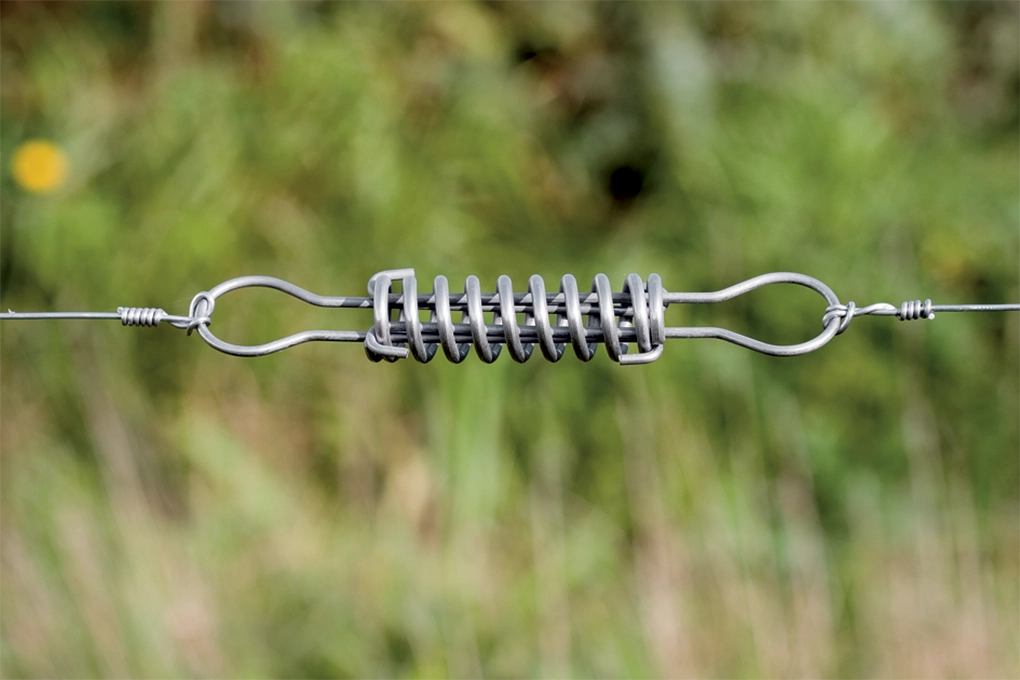
Tensioning your conductor
A properly tensioned fence is essential for a well-functioning fence. Immediately after installation or just after the fence has been in use for a while, conductors can sag.
Sagging conductors occur mainly because the wire expands due to heat or cold, animals lean against it, or posts move. Unfortunately, sagging conductors cannot be prevented sooner or later.
Regular checks
By carrying out regular checks and proper and timely maintenance, conductor sagging can be kept under control. Conductor sagging is an annoying situation, as it makes your fence less safe for your animals. They can get tangled in them. Moreover, it is not good for the quality of your fence.

Which tensioner fits your conductor?
Gallagher has different types of tensioners in its range. The type of conductor you use (tape, rope, wire or aluminised wire) determines which tensioner(s) you should/can use. We have listed our tensioners for you on the basis of the type of conductor, so that you can see at a glance which tensioners apply to your fence.
